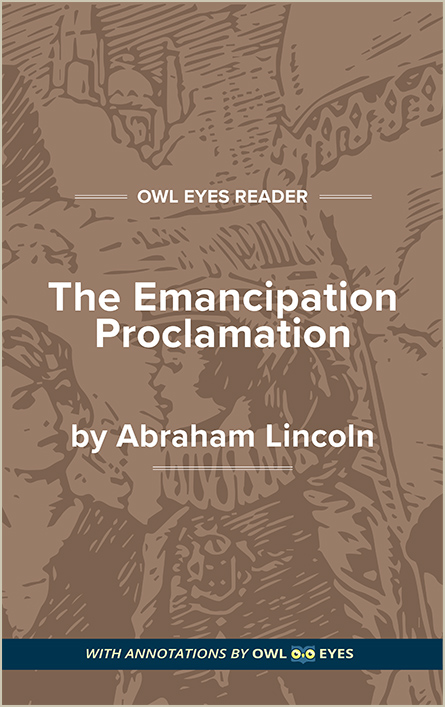- Annotated Full Text
- Publication Date: 1863
- Flesch-Kincaid Level: 17
- Approx. Reading Time: 3 minutes
The Emancipation Proclamation
Abraham Lincoln issued the final Emancipation Proclamation on January 1st, 1863. The document aimed to abolish slavery from the United States, a cause Lincoln had long supported and one which he had planned to promote through his powers as president since his election in 1860. However, the path to federally mandated abolition proved to be challenging. The Civil War erupted in April of 1861, partly as a result of the nation’s bitterly divided views on slavery. In some ways, Lincoln’s aims to win the Civil War and bring an end to slavery were aligned. The freeing of the slaves, most of whom were held in the South, would cripple the Confederacy and bring the Union closer to victory. The political landscape, however, was not so simple. Lincoln realized that there were numerous opponents of emancipation in the North and in the four “border” states—Maryland, Delaware, Missouri, and Kentucky—all of which continued to hold slaves despite their allegiance to the Union. Thus, as he began to draft the Emancipation Proclamation, Lincoln treaded lightly. While the document represents an important step towards full emancipation, it is a step marked with some compromise and confusion. The proclamation liberates the slaves in the Confederacy but, in an effort to appease allies, allows slavery to remain in the border states. Furthermore, the federal government at the time had no power to enforce emancipation in the South. Nonetheless, the Emancipation Proclamation began a slow but sure progression towards the liberation of slaves throughout the United States, and it remains a signature document in the history of American civil rights.
- Annotated Full Text
- Publication Date: 1863
- Flesch-Kincaid Level: 17
- Approx. Reading Time: 3 minutes

